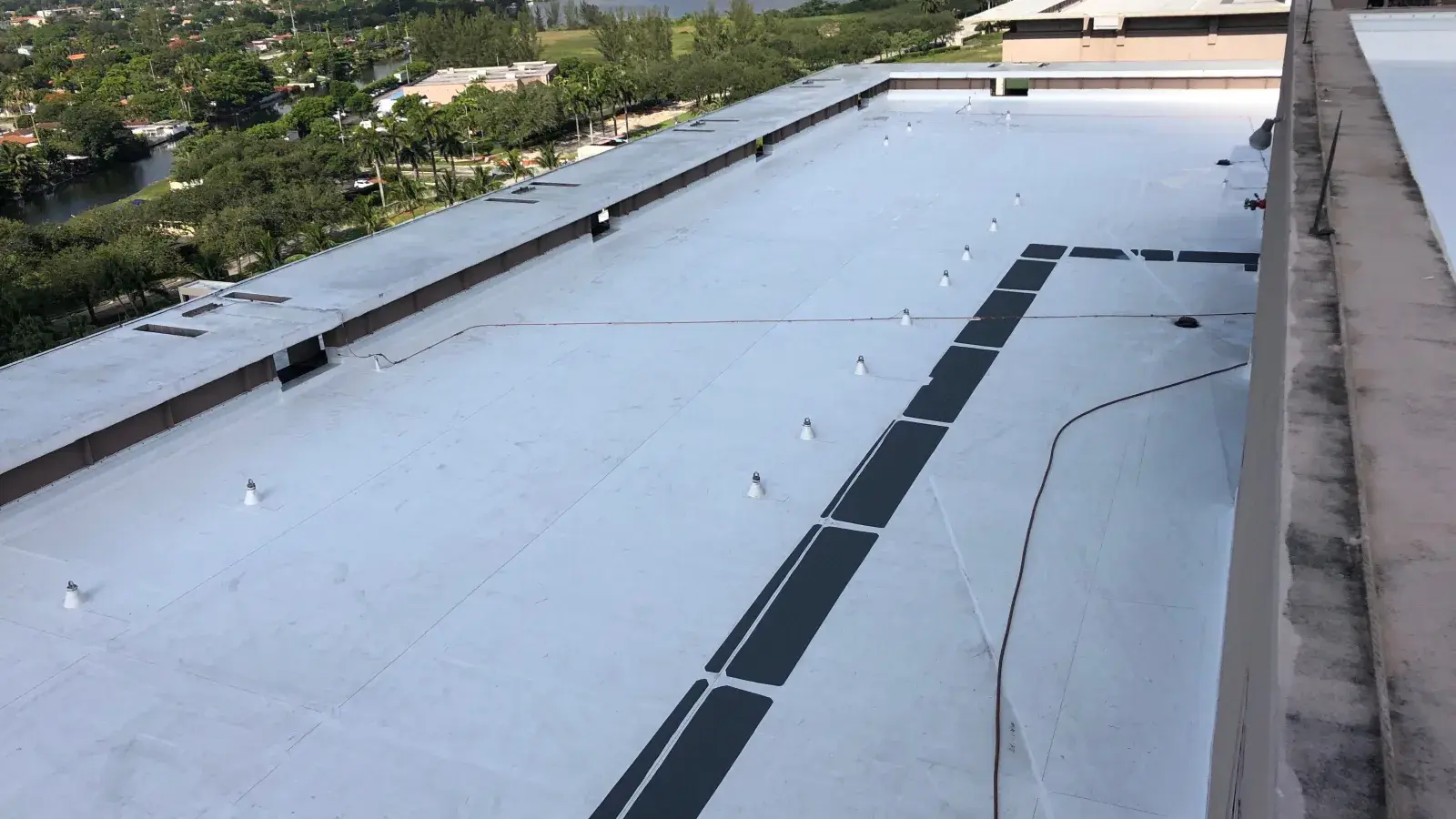Cool roofs are ideal for Florida's hot and humid climate, as they are most effective in areas where temperatures and air conditioning use are high. By reducing heat gain through the roof surface, cool roofs decrease air conditioning use that leads to 10-30% in energy savings at the hottest part of the day, when energy demand is at its peak. According to the LLawrence Berkeley National Laboratory's Heat Island Group, if cool roofs were implemented nationwide, we would save $1 billion in cooling costs, with $20 million in the Miami/Ft. Lauderdale area alone. It also helps relieve the need for additional power plants.
Some additional benefits of cool roofs:
- Cool roof options can lower the roof surface temperature by 70 degrees F, compared to a standard black asphalt roof.
- Reflective roofs have the potential to act as a significant global warming mitigation strategy as reflected energy passe through the atmosphere much more effectively than re-radiated energy.
The Fundamentals
Understanding the radiative properties of roofs is crucial to recognizing how a roof will function under the presence of the sun's heat. The energy performance of roofing materials is measured by its solar reflectance and thermal emittance properties.
- Solar reflectance is the fraction of solar energy that is reflected away from the roof.
- Thermal reflectance is a fraction representing the relative ability of the surface to re-emit absorbed heat.
Both measurements are measured on a scale from zero to one, with higher numbers representing a cooler roof.
The Solar Reflectance Index
The Solar Reflectance Index (SRI) is an alternative measurement to solar reflectance and thermal emmittance, and is calculated using the two values. It is defined by the Lawrence Berkeley National Laboratory as the roof's ability to refect solar heat, as shown by a small temperature rise. SRI is defined so that a standard black is zero and a standard white is 100, therefore particularly hot materials can result in slightly negative values, and particularly cool materials can exceed 100. SRI is a measurement that is referenced by an increasing number of code bodies and voluntary green building programs, including LEED NC Version 3 and ASHRAE 0.1-2007.
What About Modified Bitumen and BUR Roofs?
The radiative properties of modified bitumen and BUR products are determined by the topmost layer of the roofing system. Thus, the reflectivity of the granules, capsheet or surface material of the product determines the energy performance of the roofing system. Cool modified bitumen and BUR products often have specially engineered granules designed to reflect more solar energy away from the building than conventional granules. Another cool option is to choose modified bitumen and BUR products with a white or light colored capsheet.
What is the FPL Rebate Program?
FPL’S Business Building Envelope Program can help you save energy and money by providing incentives for adding or installing:
- Roof insulation,
- Reflective roof measures,
- or spray polyurethane foam (THE ONLY ROOF SYSTEM BEST ROOFING WILL NOT APPLY, TERRIBLE CHOICE FOR SOFLA)
How Do I Qualify?
There are three things you must do to quality for the rebate:
- Your A/C must run between the hours of 3 p.m. to 6 p.m. on weekdays, between the months of April to October.
- The work must be pre approved by FPL and performed by an FPL Participating Independent Contractor.
- Choose one of these approved product options:
- Building Envelope Insulation Roofing Approved Technologies
- Building Envelope Reflective Roof Approved Technologies
What Are My Options?
Roof Insulation
- $0.05 to $0.15 per square foot of insulation installed over air- conditioned space of an existing building.
- When your current roof’s R-value is 7.0 or less and the final thermal resistance reaches at least R-19
Reflective Roof surfaces
- $0.45 per square foot of reflective roof measure
- When you install light-colored metal roofs, rubber-like thermoplastic reflective membranes or reflective coatings that are Energy Star compliant
- When the existing solar reflectance of your roof is 40% and the retrofit application reflects at least 73% of the sun’s heat. Light-colored metal roofs must reflect at least 65%
Cool roofs provide an exceptional option for your next project, saving energy and extending the roof's life white mitigating the Urban Heat Island Effect and climate change.





